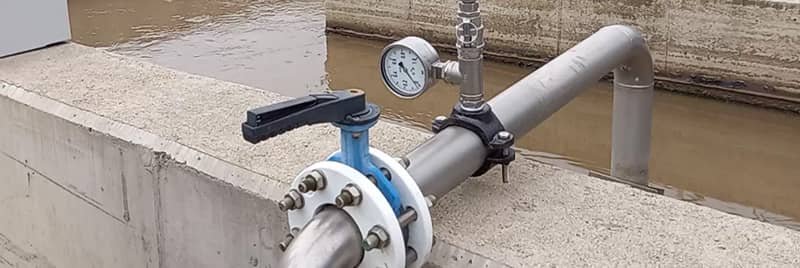Utility reduces aeration energy use by 32% with liquid diffuser cleaning
Aeration can account for as much as 60% of a wastewater treatment plant’s energy consumption, with energy use increasing when the aeration diffusers get clogged. Learn how a wastewater treatment plant in Spain reduced its aeration energy use by 32% without disrupting operations.
Almunia de San Juan wastewater treatment plant is located in the Huesca province of Spain. The plant’s aeration system maintains a dissolved oxygen (DO) level of 1.2 mg/liter by regulating when its blowers start and stop.
The blowers automatically stop when DO exceeds 1.7 mg/liter and start again when DO reaches 0.2 mg/liter. In order to reduce energy consumption, it is important to optimize the oxygen transfer through the diffusers, as well as the start-up and shutdown of the blowers.
At the beginning of 2021, the plant saw an increase in energy consumption by the blowers. Plant operators suspected that the diffusers were clogged by calcium carbonate build-up from the water, causing significant head loss in the diffusers.
The diffuser membranes were becoming clogged not only due to hard water, but also factors such as temperature and blower starts and stops. All these variables affect the degree to which the water will create scaling on the diffuser surface.
A convenient diffuser cleaning process
The solution was simple but impactful. Xylem proposed restoring aeration system efficiency with diffuser liquid cleaning, which uses a proprietary nozzle dosing system to introduce formic acid into the air supply line from the top of the basin.

This method evenly delivers the cleaning agent to the diffusers and dissolves the salts embedded in the pores of membranes. Since formic acid is an easily degradable organic acid, and is highly diluted before injection, it does not harm the basin’s sludge communities.
Once the accessories of the cleaning kit were mounted on the pipe collar, the dosage of formic acid was introduced. Within an hour, the service was complete and already showing results.
Prior to the liquid cleaning process, pressure in the air supply line was 0.53 bar, as measured at the injection point. After one hour, it was 0.48 bar, and on the third day after the cleaning, after all the cleaning agent had been consumed, the pressure decreased to 0.47 bar for average flow.
Energy consumption reduced by 32.6%
The step from 0.53 to 0.47 bar is nearly a 12% drop in pressure, since the oxygen flows more easily through the diffuser into the biological reactor. The blowers can now operate using less energy while still reaching the dissolved oxygen setpoint.
Energy consumption has decreased from 0.98 kW/m3 per day to 0.66 kW/m3 per day in the best of conditions – a 32.6% energy savings. In the worst conditions, the plant still sees a decrease from 1.21 to 0.91 kW/m3 per day – a 24.7% energy savings.
In the face of high energy prices, these savings give the wastewater treatment plant a significant reduction in its operational costs. In addition, preventive processes like these are critical to helping the water sector lead the way in achieving net-zero greenhouse gas emissions.
Learn more about Xylem’s diffuser liquid cleaning service.
Download Xylem’s white paper on net-zero emissions.
Request information

